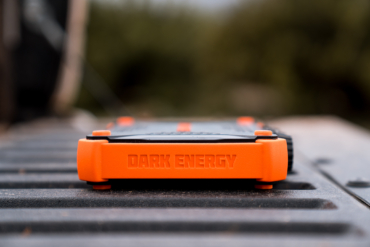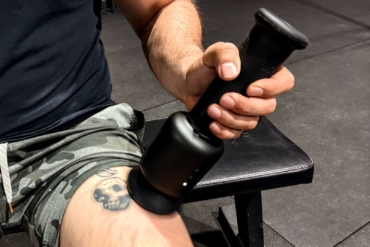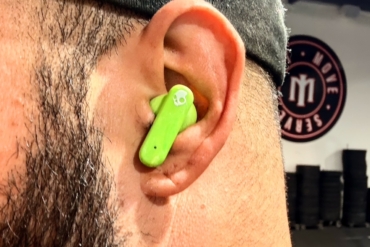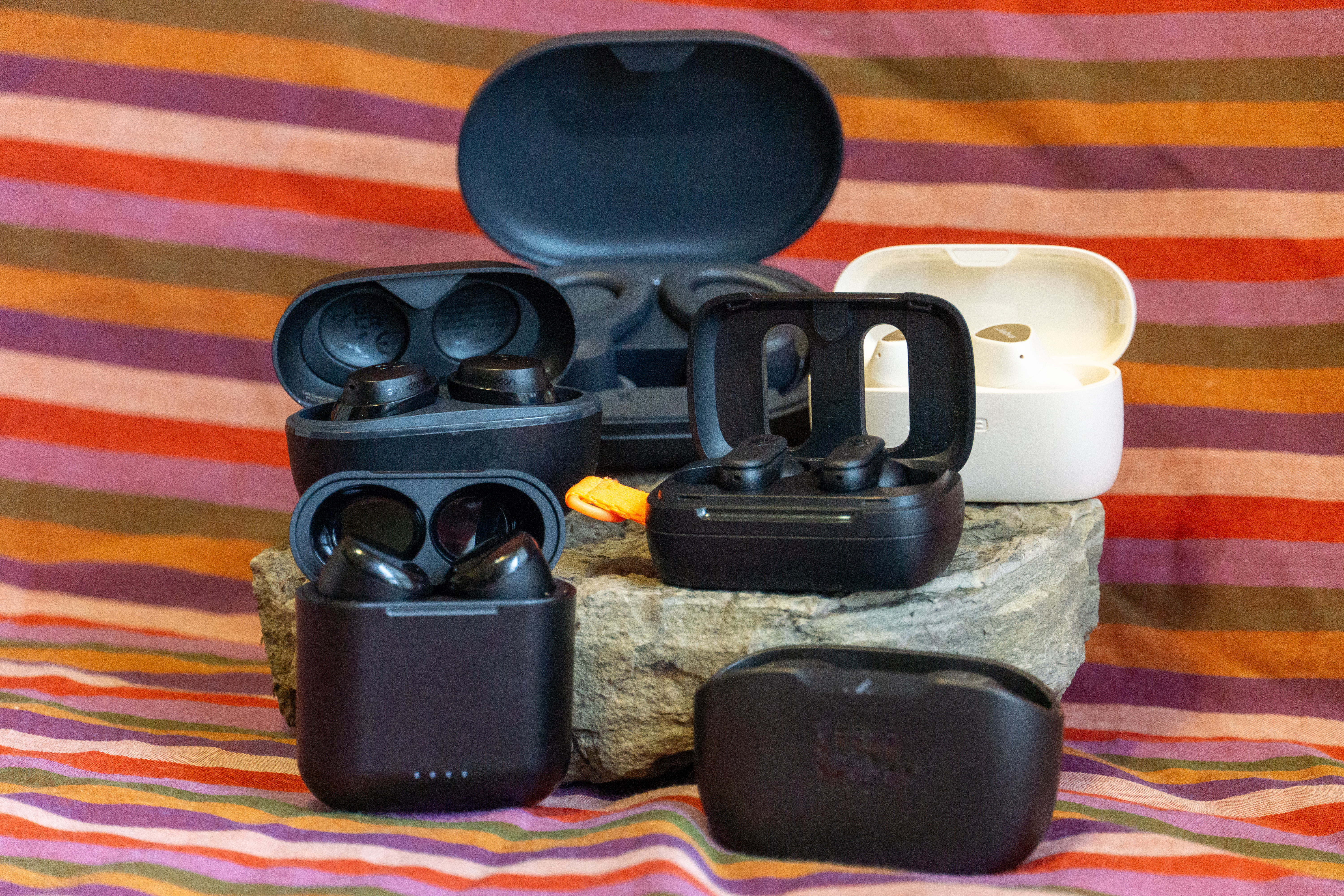A home treadmill can help you meet fitness goals without the hassle of leaving the house. However, buying a treadmill is not an easy task. For starters, all treadmills look virtually the same. And trying to decipher between makes and models can be daunting.
Digging into some of the specs requires nothing short of a degree in mechanical engineering, but we’ve got you covered. We’re confident our expert advice will help you find the best treadmill for your home.
To help sort through the options, we tested multiple treadmills, completed hours of research, and reached out to four experts for advice on what people should look for in a treadmill.
Our staff is stocked with experienced runners. We’ve collectively logged years running on treadmills and outside, garnering context and perspective in the category.
We know that the best treadmill for home use needs to fit your space, perform consistently, and stay within budget. And depending on your fitness goals and style, it’s important to find a treadmill with the proper speed, incline, and power.
The growing market of connected fitness has turned even ordinary treadmills into online fitness studios. While there isn’t a single treadmill that fits every user, we’ve broken this list into useful categories to help you find the best option.
We also included a comprehensive buyer’s guide and a comparison chart to help you narrow down the field. Scroll through all of our picks for the best treadmills of the year.
The Best Treadmills for Home Use of 2023
NordicTrack Commercial 2450
- Footprint: 78.5" x 35.6"
- Belt Size: 60” x 20”
- Max Speed: 12 mph
- Screen: 22” LCD Tilt & Pivot
Pros
- NordicTrack iFit subscription offers tons of extra options
- Large belt is comfortable for larger bodies
Cons
- Occasionally glitchy touch screen
NordicTrack T 6.5 Si
- Footprint: 67.5" x 36"
- Belt Size: 20” x 50”
- Max Speed: 10 mph
- Screen: 10" LCD Display
Pros
- Super affordable
- One touch speed control
Cons
- Top speed of 10mph may not be fast enough for some users
- Common complaints include difficult setup & assembly
Assault Runner Elite
- Footprint: 70" x 33"
- Belt Size: 62” X 17”
- Max Speed: 20 mph
- Screen: None
Pros
- Best treadmill for speed workouts
- Heavy-duty curved deck offers a durable and unique running platform
Cons
- Very basic functionality is not for everyone
- Limited pre-programmed workouts
Horizon Fitness 7.8 AT Treadmill
- Footprint: 76” X 37”
- Belt Size: 60” X 22”
- Max Speed: 12 mph
- Screen: 9.3” high contrast LED touchscreen
Pros
- Tons of pre-programmable workouts available
- Well supported App integration
Cons
- Small touchscreen not on par with similar treadmills
- Users report finicky Bluetooth connectivity
NordicTrack Commercial X32i
- Footprint: 76.5" x 40"
- Belt Size: 65” X 22”
- Max Speed: 12 mph
- Screen: 32” LCD
Pros
- Up to 40% incline far outranges other treadmills
- Auto-adjust incline/speed keeps users in the appropriate HR zone during workouts
Cons
- Relatively expensive
- Some users report glitchy & malfunctioning software
- Footprint: 64” X 31”
- Belt Size: 64" x 17”
- Max Speed: 20 mph
- Screen: None
Pros
- Long-wearing heavy-duty tread
- Excellent for speed/interval workouts
Cons
- More expensive than the Assault Runner
- Non-motorized treadmills are not for everyone
- Footprint: 78.5” X 34.5”
- Belt Size: 55” X 20”
- Max Speed: 10 mph
- Screen: Simple manual console
Pros
- Great for small spaces
- Simple no frills design means less to go wrong
Cons
- Limited connectivity/app integration
- Relatively low max speed of 10mph
- Footprint: 68” X 33”
- Belt Size: 59” X 20”
- Max Speed: 12.5 mph
- Screen: 23.8” HD touchscreen
Pros
- Tons of instructor-led classes available
- Beautifully built
Cons
- 2HP motor is meager compared to others
- Peloton's limited warranty leaves room for doubt
- Footprint: 69.1" x 35.6"
- Belt Size: 55" x 20"
- Max Speed: 10 mph
- Screen: Blue backlit LCD
Pros
- Inexpensive
Cons
- Very basic screen
- Not the most powerful
Treadmill Comparison Chart
| Treadmill | Price | Footprint | Belt Size | Max Speed |
|---|---|---|---|---|
| NordicTrack Commercial 2450 | $2,999 | 78.5″ x 35.6″ | 60” x 20” | 12 mph |
| NordicTrack T 6.5 Si | $999 | 67.5″ x 36″ | 50” x 20” | 10 mph |
| Woodway 4Front | $8,299 | 35” x 72” | 68” x 22” | 12.5 mph |
| Assault Runner Elite | $3,499 | 70″ x 33″ | 62” x 17” | 20 mph |
| Horizon Fitness 7.8 AT Treadmill | $1,999 | 76” x 37” | 60” x 22” | 12 mph |
| NordicTrack Commercial X32i | $4,500 | 76.5″ x 40″ | 65” x 22” | 12 mph |
| TrueForm Trainer | $3,995 | 61” x 31” | 64″ x 17″ | 20 mph |
| Life Fitness F3 Folding | $3,850 | 78.5” X 34.5” | 55” X 20” | 10 mph |
| Peloton Tread | $3,495 | 68” X 33” | 59” X 20” | 12.5mph |
| Schwinn 810 | $899 | 69.1″ x 35.6″ | 55″ x 20″ | 10 mph |

Why You Should Trust Us
Our team is made up of fitness-focused folks, many of whom have limited time to stay on top of their fitness during the work week. Our experts put the time into reviewing the best selection of treadmills available, and then carefully evaluated each one to make recommendations to you.
We’re confident these are the best treadmills on the market today. If you’re stuck indoors or are navigating a very busy schedule, we also have a comprehensive round-up of the best bike trainers.
At the end of the day, our staff is looking for the same thing you are — value, performance, fit and finish, and ultimately the best product for your individual needs. Our team spends their time carefully evaluating new products so that you don’t have to, which translates to more time building fitness for you. We strive to create thorough, comprehensive, and helpful reviews to help you find the best gear for your individual needs.
Author Cory Smith is a professional running coach and founder of runyourpersonalbest.com. He’s helped runners carve out time in their busy lives to execute effective training plans and understands how important treadmills can be as a training tool.
Additionally, our fitness expert and co-contributor Paul Mandell is a strength and conditioning coach based in Bishop, CA. He’s no stranger to treadmills, having used and worked with countless brands, from budget and space-saving treadmills to top-of-line models while training his clients to be strong and healthy.
How to Choose a Treadmill: A Buyer’s Guide
Walking vs. Running
Before you consider specific products, you’ll want to have an understanding of how you’ll be using the treadmill. The main thing you need to know is whether you’ll be walking or running. Walking generates considerably less strain on the mechanical parts, allowing you to get away with more of an entry-level treadmill.
The faster the speed and heavier the use, you’ll need the higher-class treadmill to keep pace without the likelihood of having issues. If you have multiple people using the treadmill or are a larger-bodied user, you’ll want a higher-class treadmill to handle the additional load.
Ease of Use
As they say, the best piece of fitness equipment is the one you use. When purchasing and setting up a treadmill, it’s essential to prioritize ease of use.
Before you choose a specific treadmill model, consider where you will put it. We recommend that you measure your available floor space. Treadmills come in a variety of sizes and shapes, and some will fit into your space better than others.
We recommend that you put your treadmill in a comfortable and well-lit area. Avoid dark and uninviting spaces such as unfinished basements and garages. Large windows and plentiful natural light are ideal.
In 2023, many treadmills are outfitted with plentiful technology and infinite program options. While tech features can be useful, some treadmill users simply don’t want (or need) them.
We recommend that you select a treadmill that feels approachable and inviting. Avoid models that feel overly complex or overwhelming.
Specs to Consider
Once you’re clear about how you’re going to use the treadmill, it’s time to dig into the ever-intimidating treadmill specs. Don’t worry — you don’t need to look at all of them, just a few key ones.
Entry-level treadmills that are more suited for walking will be on the lower range of the below specs, while runners and heavy users want to stay on the upper range.
We recommend going directly to the manufacturer’s website to find the weight capacity and other specs, rather than a middleman like Amazon or a distributor, to ensure that they are accurate.
Size: Greater Than 8 Inches Overhead
This may seem obvious, but before you even start your research, make sure you measure out the entire space you have for your treadmill. Perhaps the biggest unknown when determining if a treadmill will fit is the head height from the ceiling.
In general, most runners will bounce around 5 inches above standing height when running, so ideally aim to have at least 8 to 12 inches of space between your head and the ceiling to be safe.
Motor: 2.6 to 4 Continuous Horsepower
The motor powers the treadmill. Pretty much every treadmill expert we spoke with recommended a 3- to 4-horsepower motor for runners and at least 2.6 horsepower for walking only. Runners will start to see performance issues and premature mechanical problems on anything less than 3 horsepower.
Walkers can afford to be a tad under 3 horsepower, while heavy-use runners want to stay closer to 4. Make sure the horsepower rating is for continuous duty, not absolute horsepower, meaning the motor puts out the rated horsepower continuously versus at its peak.
If the specs don’t list horsepower in either CHP or HP continuous duty, odds are it’s not rated for continuous duty.
Rollers: Greater Than 2 Inches
Rollers are what the belt is wrapped around on either end. Generally, the larger the roller, the better. A higher diameter means less tension is created. This results in a smoother, longer-lasting belt and motor.
Belt Size: Greater Than 20 Inches Wide
The belt size determines your running surface, or how much ground you’ll have under you. Small belts can make your run feel cramped or even cause you to step off the belt.
Larger, taller people require wider and longer belt sizes because their strides are longer and wider. An average person’s foot stance width is roughly 16 inches, so choose a belt size no narrower than 20 inches.
Generally speaking, 20 x 55 inches is considered the entry-level ideal for walking and light jogging, with 22 x 60 inches being a standard size for average-height runners. Extra-tall runners with a long stride may need even more than 60 inches.
Speed
The speed range of a treadmill varies by brand and model. Typically, less expensive and lower-end models will top out at around 8 mph. While 8 or 10 mph may be plenty for speedwalking and jogging, it won’t be enough to fulfill every runner’s needs.
If you are looking to train for high-level races at high speeds, we recommend a mid or high-tier treadmill that can max out at 12 mph or more.
Most treadmills offer easy-to-adjust speed settings. Before you make a purchase, be sure to check out the speed settings to ensure that they are easy to use and appropriate for your needs.

Incline
Speed is not the only treadmill adjustment that can alter the difficulty of your workout. Many treadmills provide the option to change the incline angle of the platform. With a quick adjustment, you can shift between a flat, inclined, or even declined surface.
Walking or running on an incline can help you break through plateaus and stay motivated. Compared to flat terrain, an inclined treadmill can help increase your heart rate, burn more calories, and activate underdeveloped muscle groups.
Most treadmills offer settings that start at a 0% incline and adjust by 0.5% increments to a maximum incline of around 15%. If you are training for outdoor terrain with a varied grade, treadmill incline adjustment is an important feature.
Choosing Between Brands
Stick with the name brands. It’s not that smaller brands are necessarily bad — it’s just that larger brands offer more features and will be easier to repair if something breaks.
Two brands we recommend are NordicTrack and Nautilus. Others include Sole, Life Fitness, Precor, Spirit Fitness, Assault Fitness, and Landice.
Buying New vs. Used
Buying a used treadmill can be tempting due to the lower price, but in general, we would avoid buying used treadmills if possible.
Unlike a car, where the odometer identifies how often it’s been used, it’s not as clear to tell how much a treadmill has been used. Furthermore, manufacturers’ warranties are only valid to the original buyer — they don’t roll over.
Connected Fitness Is the Trend
A big trend in home fitness is a move toward a connected fitness experience — the ability to participate in coached workouts on a screen or virtually run routes all over the world.
In some cases, the treadmill speed and incline settings automatically adjust based on the virtual terrain, your workout, or a built-in heart-rate monitor.
Some treadmills have preloaded cardio workouts or courses in the console. But in most cases, access to the full content is an additional subscription fee on top of the purchase of the treadmill. Usually, the more expensive the treadmill is, the more you get bundled with the purchase price.
Nowadays, the virtually accessible content is pretty impressive — so much so that GearJunkie’s founder, a diehard outside trail runner, became a convert.
Pricing
If you skimp on cost upfront, there’s a good chance you’ll spend more on repairs or end up with a shortened lifespan for your treadmill. Generally speaking, a quality entry-level treadmill will retail for around $800. And a higher-end treadmill will reach above $2,000.
Entry-level treadmills are most suited for light usage walking and light single-use jogging. As the treadmill gets used more or the pace run on it increases, the more you should spend on a treadmill.
Delivery
We highly recommend buying your treadmill directly from the manufacturer to ensure that it doesn’t get broken in transit. Given the large size, weight, and number of mechanical parts, treadmills are not an easy item to ship and require special handling care.
Another thing to think about it is setting up the treadmill. Treadmills are extremely heavy and large, making them difficult to set up. Standard delivery in most cases means delivery to the front door, leaving you responsible to set up the treadmill.
For a small fee, most manufacturers offer “white-glove” delivery options wherein a certified delivery person will set up the treadmill for you. It’s worth paying a bit more for this service.
Storage
Treadmills take up a lot of space. While you’re actively using your machine, its large footprint is warranted. However, you’ll want to make a plan for storing your treadmill when not in use.
Depending on how long you will be storing the machine, there are a few key factors to keep in mind. Folding treadmills take up less space overall, which makes them ideal for smaller living spaces such as condos and apartments.
Proper storage improves the performance and extends the lifespan of a treadmill. Always keep your treadmill on a level surface in a climate-controlled setting.
If your treadmill has been stored unused for more than a month, we recommend lubricating the belt with silicone before using it again.
Treadmills Rule Home Fitness Equipment
Despite the rise in popularity of Peloton bikes, home treadmills still rule the personal fitness equipment universe. According to the National Sporting Goods Association, treadmill purchases accounted for 54% of all home fitness equipment sales in 2018.
On an instinctual level, this makes sense. As Colleen Logan, vice president of marketing at ICON Health & Fitness, explained, “Treadmills are a natural motion. We are human, we are upright, walking, jogging, and running. These are all-natural motions we do. Other fitness category equipment is great (i.e., rowing, cycling, elliptical), but it’s not how we walk down the street. Treadmills are the most popular for that reason.”
Moreover, in terms of accessible home fitness, running remains one of the highest calorie burners per hour.
Our selection for the best overall treadmill for home use is the NordicTrack Commercial 2450. This treadmill offers standard yet reliable features and holds up well to regular use over the years.
We recommend all of the treadmills on this list. The best treadmill for at-home use is the one that perfectly fits your budget, training needs, and available space.
If an at-home treadmill can allow you to meet your training needs in a way that fits your lifestyle, it may be a worthwhile investment. That said, treadmills are not cheap.
So, it’s essential to be sure that a treadmill fits (both literally and figuratively) into your life. A good-quality treadmill is built to last for many years and can be considered a long-term investment.
A treadmill mat prevents dust from building up underneath the machine. Also, a treadmill mat protects your floor and helps reduce vibration and noise. Many people use a yoga mat for this purpose.
While a yoga mat may do a decent job as a treadmill mat in the short term, yoga mats are generally softer and thinner than treadmill mats and will flatten over time. Look for a treadmill mat that is around ¼-inch thick and large enough to accommodate the entire footprint of your machine.
While some treadmills are more likely to damage your floor than others, it’s always a good idea to use a treadmill mat between your floor and your machine to prevent damage. A treadmill mat is roughly ¼-inch thick and dense enough to protect your floor from scratches and dents.
Additionally, a treadmill should always be set up on a level surface. Use a level to ensure that your floor surface is level. An uneven surface can affect your running or walking form, and it can also lead to floor damage.
Running on a treadmill and indoor cycling each have their advantages. Before choosing one over the other, consider your budget, training goals, and physical ability.
The quality of the workout depends on the intention and intensity of the user. Both of these kinds of equipment can offer a great workout and help you burn lots of calories.
Spinning is much easier on the joints. Running creates more impact than spinning and may not be the best option for those who deal with joint pain. That said, spinning can harm your posture, and those who sit at a desk all day may want to be upright during their workouts.
In the end, neither is necessarily better. Both activities offer a great workout that can be done at home. The choice comes down to the needs of the user and personal preference.
A good-quality treadmill should last at least 7 or so years, even with very heavy use. Many users report owning treadmills that last well over 10 years. Before you buy, check the treadmill’s warranty.
















